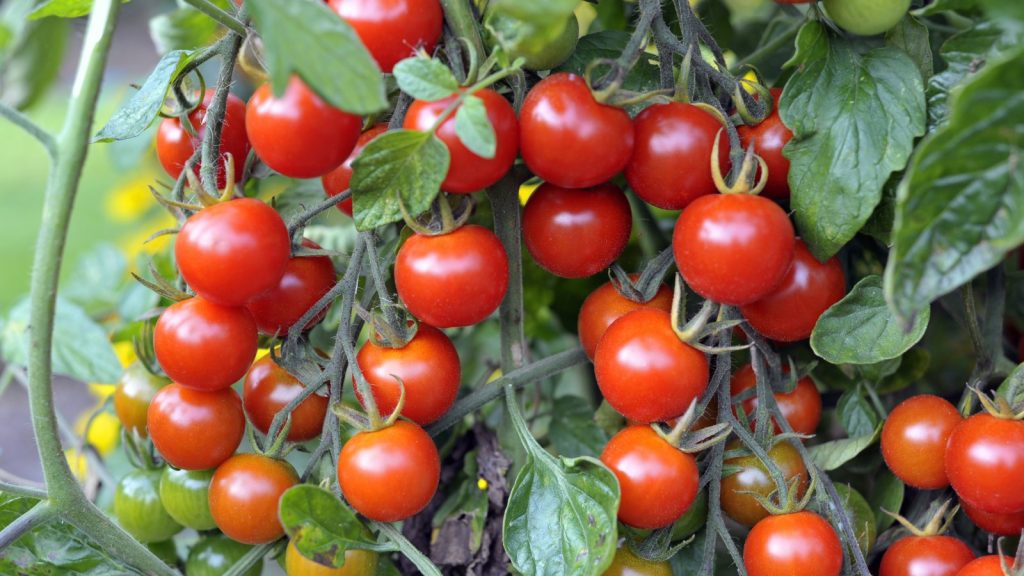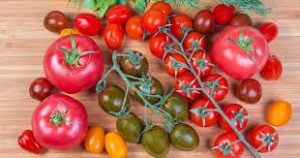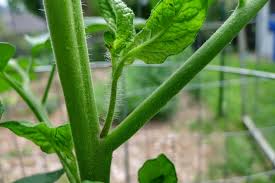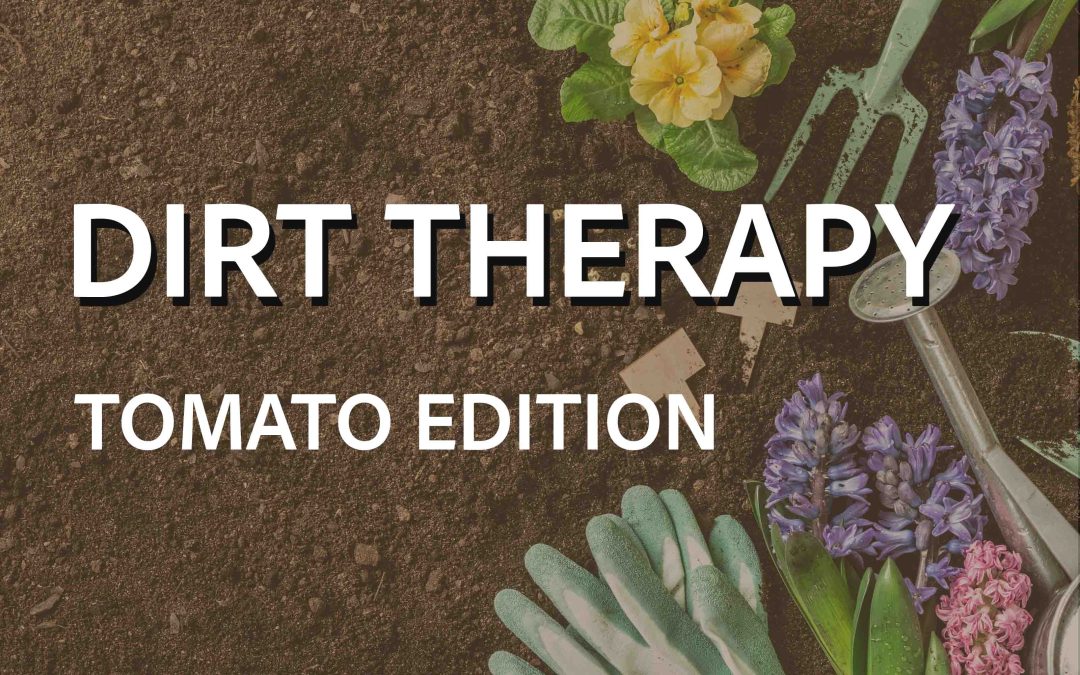Choosing the Right Tomatoes for You

Have you ever had the satisfaction of biting into a fresh, vine-ripe tomato?
My son has been obsessed with them since he was old enough to start on solid foods. There is truly nothing better, especially when you’ve grown them yourself! Even people who don’t like the taste of store-bought tomatoes cannot help but love the taste of a fresh tomato with its sweet yet savory and slightly acidic flavor!
Combine the taste with the fulfillment of your hard work culminating in a successful harvest, and there is truly no other experience like it! This week we are taking a deep dive into everything tomatoes! We’ll discuss the art of planting and maintaining tomato plants and look into the different types of tomatoes that you can choose to grow in your garden at home!
So…without further ado… Let’s get into it!
Digging Into Tomato Varieties
When choosing the right tomatoes, there are a ton of different varieties out there to pick from, so it can definitely get overwhelming. There are a few basics that you should understand in order to choose the correct tomatoes to grow at home.
Let’s break it down!
Indeterminate Tomatoes

- Grow like vines
- Reaches heights from 6-12 feet tall depending on the variety
- Continuous fruit/flower production, meaning a steady supply of tomatoes all season
- Long growing season from the summer through early fall (until frost kills them)
- Require significant support due to vining nature. (stakes, cages, trellises)
- Pruning is strongly recommended
- Requires a large amount of space. May plant in minimum 10 gallon container, but will do best in garden/raised beds
- Ideal for gardeners looking for a steady supply of tomatoes all season long
Determinate Tomatoes

- Grow bushy and compact
- Reaches height between 3-5 feet tall
- Plant will grow to a certain size, then flower and produce most of its fruits all together within 1-2 months.
- Shorter growing season
- Require less support due to compact size, but cages/stakes are still recommended due to the heavy fruits
- No pruning needed
- Ideal for smaller or container gardens
- Ideal for gardeners that want a large harvest all at once (specifically for making sauce or canning)
Indeterminate Tomato Heritage Varieties
When choosing the right tomatoes, the two most common terms you have probably heard in regards to tomato varieties would be heirloom and hybrid. Many indeterminate tomato plants are broken down into these two categories. Let’s discuss the major differences in these varieties.
Heirloom

Think of heirloom tomatoes as “antiques” or “passed down” tomatoes. These varieties have had their seeds saved for many generations (often 50+ years).
These are open-pollinated tomatoes, meaning they are pollinated naturally by wind, insects, birds, etc. The major benefit of this is that their seeds can be saved from year to year and still grow plants that have the same characteristics as the “parent” plant.
When compared to hybrid tomatoes, some people report that heirlooms have a more intense, complex, and wider spectrum of flavors (sweet, tangy, fruity, smoky, and even spicy).
Heirlooms come in nearly every color imaginable and in various shapes/sizes. Each tomato has a unique appearance. Each fruit will often have little “imperfections”, giving them each a little charm, that won’t affect their taste at all
Heirlooms have a thinner/more delicate outer skin putting them at a slightly increased risk to split open while growing.
Hybrid

Think of hybrid tomatoes as a purposefully “mixed breed” of tomatoes.
Plant breeders intentionally cross-pollinate two different type of tomato plants with desirable traits (ie. high fruit yield and disease resistance) and create a hybrid variety
When seeds from hybrid tomatoes are used the next season, the next generation will not produce plants with the same characteristics as their parent plant.
Hybrid tomatoes will have a uniform appearance so each fruit looks alike.
Despite the lack of character, the cross breeding technique allows these tomatoes to have consistent production, a longer shelf life, and to withstand diseases better than the heirloom varieties
Hybrid tomatoes have a firmer texture than heirlooms which helps prevent the fruits from splitting open.
Method for Planting Tomatoes
After you have prepared your garden, as we had discussed last week, and have chosen the varieties of tomatoes you want to plant; it is officially time to pop those babies into some containers or flower beds! Let me walk you through the steps on planting your tomato plants…
- Dig a hole into your soil that is slightly larger than the root ball on your plant.
- Plant the seedling (plant) into the dirt. You want to put it deeper in the soil than they were sitting in the container you took it out of. Plant up to the first set of leaves to encourage more root growth of your plant.
- Space out the plants according to their mature size (18-36 inches apart, with 3-5 feet between the rows)
- Add some sort of support structure to your tomato plants immediately after planting or before the seedlings reach 12 inches tall. This will prevent root damage when they are installed.. For example, stakes, cages, or trellises to keep fruits off the ground, improve air circulation, and to make the harvesting process easier.
Maintenance through the Growing Season
Check out our last blog post “Dirt Therapy: Starting a Produce or Herb Garden” for tips on watering and fertilizing throughout the season!

What should you do with tomato ‘suckers’?
Pruning: Prune indeterminate tomato plant “suckers”. “Suckers” are off shoots that grow in the area between the tomato plant’s main stem and leaf branch. This will help your plant to grow vertically allowing fruit production to stay on the main stem. Basically, this will increase your fruit production and make your support structures more effective!
IMPORTANT: Do not prune “suckers” off of determinate tomato plants! This can actually reduce your overall yield of tomatoes for the season.
Conclusion
That’s all there really is to it my fellow gardeners! Honestly, I think one of the most difficult things about growing tomatoes is choosing the right tomatoes to grow!
I wish you all a happy harvest this year with an abundance of fruits! In roughly 70-90 days you’ll have more tomatoes than you know what to do with! As always, HAPPY PLANTING EVERYONE!


Recent Comments